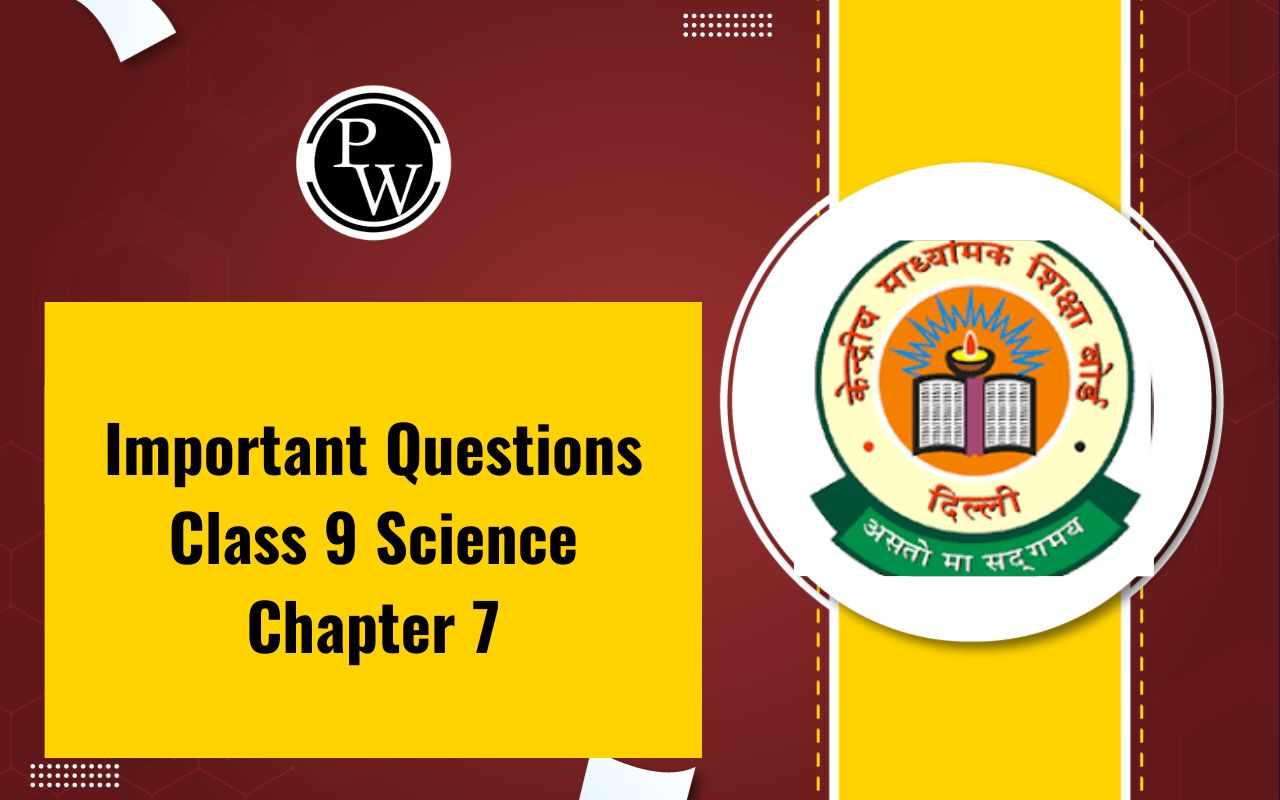

CBSE Important Questions for Class 9 Social Science History Chapter 5 Pastoralists in the Modern World: Nomadic pastoralists are people who move from place to place with their herds of animals like goats, sheep, camels, and cattle.
They do not settle in one area but travel to find grazing lands and resources for their livestock. In India, many communities still follow this way of life, such as the Raikas of Rajasthan.
These communities have rich traditions and a deep connection with nature, but their lifestyles have faced challenges due to changes brought by modernization and colonial policies.
In Chapter 5 of Class 9 History, students learn about the history and struggles of nomadic pastoralists, focusing on how their lives were affected by various factors like colonial control, land reforms, and changing state policies.
Students can use these important questions to prepare thoroughly for exams and understand the impact of historical events on these communities.
By practicing the CBSE Class 9 History Chapter 5 Pastoralists in the Modern World important questions, students can strengthen their understanding and effectively prepare for their exams.
CBSE Important Questions for Class 9 Social Science History Chapter 5 Introduction
In Chapter 5 of Class 9 Social Science History, titled Pastoralists in the Modern World, the focus is on understanding the role of pastoralism in the lives of people and its transformation in the modern world.
Pastoralists are communities that depend on the rearing of animals like cattle, goats, and sheep for their livelihood. The chapter explores how pastoralist practices were deeply linked with the environment, culture, and economy, especially in regions such as Africa, Central Asia, and India.
The chapter also highlights the challenges faced by pastoral communities as modern political and economic changes took place. It discusses how the encroachment of settled agricultural societies, colonial policies, and the development of modern infrastructure like railways and roads disrupted traditional pastoralist ways of life.
The shift in land use, introduction of new laws, and competition with other forms of agriculture led to the marginalization of pastoralist communities in several parts of the world.
Students will learn about the impact of colonialism, industrialization, and globalization on pastoralists, and how these forces transformed their traditional practices, leading to changes in their social structure, economy, and culture.
Additionally, the chapter touches upon the ways in which pastoralist communities adapted and resisted changes brought by the modern world.
The important questions for this chapter typically cover key topics such as:
- The relationship between pastoralists and the environment.
- How pastoralist practices differed across regions.
- The effects of modern development on pastoralist societies.
- The significance of pastoralism in global trade and economy.
CBSE Important Questions for Class 9 Social Science History Chapter 5 PDF
You can access the CBSE Important Questions for Class 9 Social Science History Chapter 5 Pastoralists in the Modern World in PDF format through the link provided below.
This PDF contains a comprehensive collection of key questions designed to help students revise the chapter effectively and prepare for their exams.
The questions focus on important topics such as the lifestyle of pastoralists, the challenges they faced due to colonial policies, changes in their traditional practices, and the impact of modern development on their way of life.
By studying these questions, students can deepen their understanding of the chapter's concepts and improve their exam performance.
Download the CBSE Important Questions for Class 9 Social Science History Chapter 5 PDF.
CBSE Important Questions for Class 9 Social Science History Chapter 5 Pastoralists in the Modern World
Here are some important questions for Class 9 Social Science History Chapter 5 Pastoralists in the Modern World that will help you in your preparation:
Section –A [1 Mark]
1.Raika pastoral community belongs to_______?
(A) Himachal Pradesh
(B) Rajasthan
(C) Jammu and Kashmir
(D) Maharashtra
Ans. (B)
2. Who was the deputy Conservator of forests at Darjeeling in the year 1913?
(A) H S Gibson
(B) Buchanan
(C) Francis Hamilton
(D) De Brett
Ans. (A)
3. The ____________ of Maasai society wear traditional deep red ‘shukas’, brightly beaded jewellery and steel tipped spears.
(A) Elders
(B) Warriors
(C) Rulers
(D) Villager
Ans. (B)
4. Name the game reserve of Tanzania?
(A) Samburu National Park
(B) Maasai Mara National Reserve
(C) Serengeti National Park
(D) None of the above
Ans. (C)
5. The pastoralist community who herded cattle in Karnataka and Andhra Pradesh were known as ___.
(A) Kurumas
(B) Gollas
(C) Kurubas
(D) Dhangars
Ans. (B)
Section –B [2 Marks]
6. Name the Act which was passed by the British government to limit the movement of the nomadic people. Mention any two features of the Act.
Sol.
The Criminal Tribes Act - By this Act, many communities of craftsmen, traders, and pastoralists were classified as Criminal Tribes. Under this Act, various restrictions were put on their movement.
7. Large areas of grazing land were turned into game reserves.” Mention its two impacts on pastoral communities.
Sol.
• Pastoralists were not allowed to enter these reserves.
• The loss of the finest grazing lands and water resources created pressure on the small area of land that the Maasai were confined within.
8. Explain the annual movement of the Gujjar Bakarwals.
Sol.
The Gujjar Bakarwals migrated to Jammu and Kashmir in the 19th century in search of pastures for their animals.
• Winter: When the high mountains were covered with snow and there was a lack of pastures at the high altitude, they moved to low hills of the Shiwalik. The dry scrub forests here provided pastures for their herds. By the end of April, they began their northern march for their summer grazing grounds.
• Summer: With the onset of summer, the snow melted and the mountain sides became lush green. By the end of September, the Bakarwals started their backward journey.
9. Describe the life of pastoralists inhabiting the mountains of India.
Sol.
(a) The Gujjar Bakarwals of Jammu and Kashmir, the Gaddi shepherds of Himachal Pradesh, the Gujjar cattle herders of Garhwal and Kumaun, the Bhotiyas, the Sherpas, and Kinnauris move annually between their summer and winter grazing grounds governed by the cycle of seasonal movements.
(b) They adjust their movements to seasonal changes and make effective use of available pastures in different places. When pastures are exhausted or unstable in one place, they move their herds to new areas.
Section –C [3 Marks]
10. Many ecologists believe that in dry regions and in the mountains, pastoralism is still ecologically the most viable form of life. Do you agree? Justify by giving reasons.
Sol.
Yes, in dry regions and in the mountains, pastoralism is still ecologically the most viable form of life because:
• In winter, when the high mountains are covered with snow, the pastoralists need to move to the low hills in search of pastures.
• The people of the central plateau of Maharashtra need to move out of the plateau during the dry season in search of pastures. They migrate towards the Konkan region, manuring the fields of the Konkan farmers.
• In the hilly areas or dry regions, if the pastoralists do not move, the continuous intense grazing of the pastures will lead to deterioration of pastures.
11. How do droughts affect the life of pastoralists? Explain.
Sol.
• Limited grazing area: Due to restrictions on the movement of nomads, they are bound to a fixed area, cut off from the best grazing lands, and forced to live within a semi-arid tract prone to frequent droughts.
• Death of animals: Due to restrictions on movement, the pastoralists could not move to places where pastures were available. This led to a shortage of fodder, and a large number of Maasai cattle died of starvation and disease.
12. Discuss the factors on which the life of pastoralists depends.
Sol.
Pastoralists live in small villages, plateaus, deserts, or near the skirts of the woods. They cultivate a small piece of land, keep herds of cattle, flocks of sheep and goats, or herds of camels. They move between their summer and winter pastures with their herds, selling plough cattle and their goods to farmers, and getting grain and rice in return.
The pastoral life is sustained by knowledge of:
• How long to stay in one area.
• How to find food and water for their herds.
• How to assess the timing of their movement.
• Their ability to set up relationships with farmers.
13. Compare the lives of African pastoralists with pastoralists in India during the colonial period.
Sol.
There are many similarities in the way in which the modern world forced changes in the lives of pastoral communities in India and Africa.
• All uncultivated land was seen as wasteland by colonial powers. It produced neither revenue nor agricultural produce. This land was brought under cultivation.
• In most areas, the lands taken over were actually grazing tracts used regularly by pastoralists. The expansion of cultivation inevitably meant the decline of pastures and a problem for both Indian pastoralists and the Maasai.
• From the 19th century onwards, the colonial government started imposing restrictions on the pastoral communities. They were issued permits that allowed them to move with their livestock, but obtaining permits was difficult and involved harassment.
• Those found guilty of disobeying rules were punished.
14. Elaborate on the seasonal movement of Dhangars of Maharashtra.
Sol.
The Dhangars live in the central plateau of Maharashtra during the monsoon season. They use it as a grazing ground for their flock and herds. They sow their dry crop of ‘bajra’ during the monsoon season.
• Monsoon: In October, they reap the harvest and move to Konkan, a fertile agricultural region. The Konkan peasants welcome them to manure and fertilize their fields for the ‘rabi’ crop.
• The flocks manure the fields and feed on the stubble. They stay there until the monsoon arrives and then move back to the dry plateau, carrying rice given to them by the Konkani peasants.
Benefits of CBSE Important Questions for Class 9 Social Science History Chapter 5 Pastoralists in the Modern World
Comprehensive Revision: The important questions cover key topics from the chapter, allowing students to revise all crucial concepts effectively. This helps ensure that students don’t miss out on any important part of the syllabus.
Focused Learning: By practicing these questions, students can focus their study efforts on the areas that are more likely to appear in exams. These questions typically address core themes such as the impact of colonialism on pastoralists, their way of life, and their seasonal movements.
Improved Exam Preparation: Regularly solving these important questions enhances a student’s understanding of the chapter and prepares them for different types of questions they might face in the exam, whether they are multiple-choice, short answer, or long answer questions.
Conceptual Clarity: Answering these questions helps students grasp the fundamental concepts of pastoralism, the challenges faced by pastoral communities, and the changes brought about by colonial policies. It helps in developing a deeper understanding of historical processes.
Time Management Skills: By solving a variety of questions from this chapter, students improve their ability to manage time during exams. Practicing these questions will help students become more confident and quick at answering questions within the exam time frame.
Self-Assessment: These important questions give students an opportunity for self-assessment. They can evaluate their strengths and weaknesses, focusing more on areas where they might be less confident.
Better Score: With regular practice of important questions, students increase their chances of scoring higher marks as they become familiar with the exam pattern and question format.
Increased Confidence: Solving these questions boosts students' confidence and reduces exam anxiety, as they are well-prepared and know what to expect.
CBSE Important Questions for Class 9 Social Science History Chapter 5 FAQs
Who are pastoralists?
What is the significance of pastoralism in dry regions and mountains?
Why did colonial policies harm pastoralists?
What was the role of the Criminal Tribes Act in affecting pastoralists?













